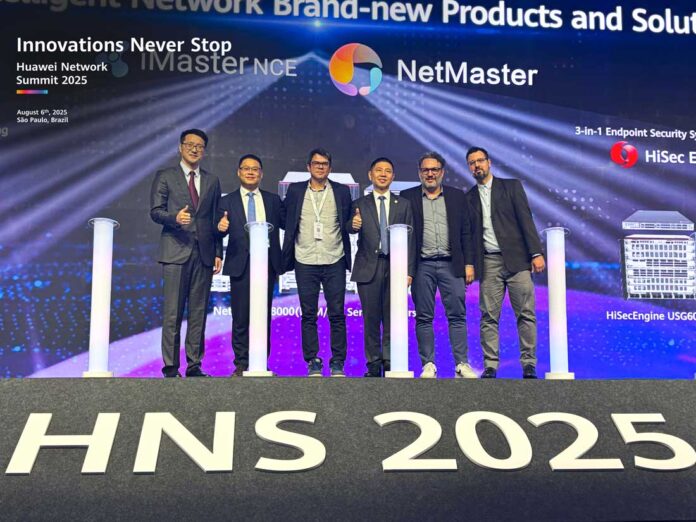Huawei has reaffirmed its commitment to Latin America as a central pillar of its digital transformation strategy, as evidenced by the Huawei Network Summit 2025 in São Paulo. During this event, the Chinese company launched its innovative Xinghe Intelligent Network portfolio and the Xinghe AI Fabric solution, both aimed at driving smart infrastructure in the region.
With the participation of more than 600 leaders in the technology sector and representatives from countries such as Brazil, Mexico, and Colombia, the focus was on networks that support the growing integration of cloud computing and artificial intelligence. Huawei's premise is clear: artificial intelligence requires robust networks with security, low latency, and high performance.
Mitchell Zhang, president of Huawei Enterprise Latin America, highlighted the need for a reliable infrastructure to sustain the revolution in intelligent applications across multiple industries. The company bets on a portfolio that includes campus networks, WAN, data centers, and network security, all under the umbrella of Xinghe Intelligent.
A central focus of the conference was the update to Xinghe AI Fabric, aimed at data centers. This solution is built on the three-layer architecture (AI Brain, AI Connection and AI Network Element) and promises to offer high resilience and computational capacity. AI Brain, for example, uses Huawei's digital network map and the NetMaster AI agent to facilitate the operation and maintenance of heterogeneous networks, raising operational efficiency.
Security also took center stage at the event with the launch of Wi-Fi Shield, which encrypts the physical layer using artificial intelligence to prevent data leaks in office environments. At a macro level, the Xinghe Intelligent Network Security introduces AI-powered collaborative defenses capable of detecting and tracking complex threats.
Specific cases in the region, such as those mentioned by Eduardo Anhaia from Brazil Compwire and the Brazilian bank Bradesco, demonstrate how these solutions enhance resilience and operational efficiency. Innovations also include advances in energy efficiency, with equipment that consumes significantly less energy than the market average.
The deployment of these technologies arrives at a moment of rapid digital transition in Latin America, where critical sectors seek to improve their competitiveness through smart infrastructures. Huawei positions itself as a strategic partner in this process, highlighting its ability to integrate artificial intelligence into the core of the network.
Geopolitically, Huawei's approach in Latin America responds to international restrictions, particularly those imposed by the United States on the export of advanced technology. The company seeks to strengthen its influence by offering independence from foreign infrastructure.
Despite the enthusiasm, the adoption challenge is considerable, given that the region faces digital gaps and regulatory limitations. Huawei is committed to co-creating solutions tailored to the local context, trusting that its focus on efficiency and ease of implementation will win over businesses and governments in the transition to network intelligence.
Huawei's intervention at Network Summit 2025 highlights the importance of robust networks for the expansion of artificial intelligence. With Xinghe Intelligent and Xinghe AI Fabric, Huawei aims to be the essential support for this transformation in Latin America, seeking that the promises of innovation become concrete adoptions in an increasingly competitive and digitally dependent market.
More information and references in Cloud News.



